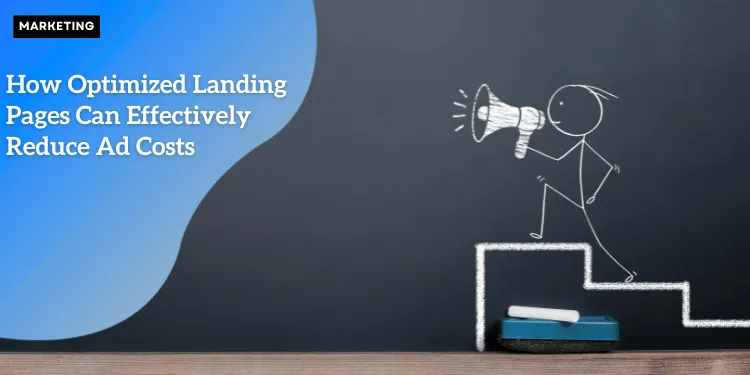How Optimized Landing Pages Can Effectively Reduce Ad Costs

Anúncios
In the ever-evolving landscape of digital advertising, businesses are constantly searching for ways to optimize their campaigns and maximize their return on investment (ROI).
While most marketers are familiar with optimizing websites for organic search rankings, optimizing landing pages for paid traffic—especially for ad engines like Google and Meta (formerly Facebook)—is often overlooked.
This optimization is crucial for driving down ad costs while improving campaign effectiveness, ultimately leading to better ad performance and increased revenue.

Anúncios
The Importance of Relevance in Ad Targeting
Ad targeting algorithms across social media platforms and search engines evaluate multiple factors to determine how relevant an ad is to its audience.
One of the primary factors is the landing page experience, which plays a significant role in how well the ad performs.
Algorithms such as Meta’s “Quality Rank” and Google’s “Ad Rank” assess the relevance of both the ad and the landing page to assign a score that directly impacts ad costs.
Anúncios
A well-optimized landing page that matches the ad’s content and the user’s intent can improve the relevancy score, which in turn reduces the overall cost per impression (CPI) and boosts the ad’s chances of conversion.
On the other hand, low-quality landing pages with irrelevant content or poor user experiences lead to high bounce rates, penalizing the campaign with higher ad costs.
The Mechanics of Ad Engine Optimization (AEO)
Ad Engine Optimization (AEO) is a strategy aimed at improving the relevance of a landing page in relation to the ad.
When there is a disconnect between the ad and the landing page—either in terms of visuals, messaging, or product offerings—users are more likely to bounce before making a purchase.
This results in wasted ad spend and a higher cost per acquisition (CPA).
Custom landing pages are often employed to improve AEO, particularly in bottom-of-the-funnel campaigns where the intent to purchase is high.
However, top-of-the-funnel campaigns, especially those aimed at broad customer acquisition through social media, require more versatile approaches.
This is where a strategy that aligns the landing page with the user’s intent—especially in platforms like Facebook, where users are not actively searching for products—becomes vital.
Example: Impact of Optimized Landing Pages on Ad Costs
To demonstrate the effect of landing page optimization on ad costs, consider an A/B test my firm conducted on Meta’s platform.
Traffic was split between two landing pages: a standard product page and an ad-engine-optimized version.
Both versions used the same ad and budget.
The optimized landing page received 28% more traffic due to its lower cost per impression and generated 99% more revenue than the standard product page.
This result highlights how a well-optimized landing page can drive down ad costs while simultaneously increasing revenue.
| Metric | Standard Product Page | Optimized Landing Page |
|---|---|---|
| 💰 Promotional Cost | $1,000 | $1,000 |
| 🔄 Interactions | 3,000 | 3,000 |
| 💸 Cost per Thousand Impressions (CPM) | $14.1 | $11.4 |
| 📈 Conversion Rate | 2.5% | 4.0% |
| 🛒 Orders | 75 | 120 |
| 💵 Average Order Value | $75 | $75 |
| 💰 Sales Generated | $5,625 | $9,000 |
| 📊 Margin | 25% | 25% |
| 💵 Gross Revenue | $1,406 | $2,250 |
| 💸 Profit | $406 | $1,250 |
This table illustrates how the optimized landing page not only received more traffic but also generated significantly higher revenue.
The improvement in conversion rate from 2.5% to 4% resulted in a considerable boost in profitability, showcasing the power of landing page optimization.
3 AEO Hacks to Improve Landing Page Relevance
Implementing Ad Engine Optimization (AEO) requires a strategic approach.
Below are three powerful techniques that can help enhance the relevance of your landing pages and drive down ad costs:
1. Mirror Campaign Creative
The easiest way to improve the relevancy of a landing page is by mirroring the creative from the ad.
This includes using the same images, copy, and design elements featured in the ad.
This consistency reassures visitors that they have arrived at the right place, reducing the likelihood of an early bounce.
For example, if your ad promotes a red four-slot toaster, ensure that the landing page showcases the exact same red toaster.
This alignment between the ad’s messaging and the landing page experience helps increase relevance, which in turn boosts the quality score and reduces ad costs.
2. Ensure the Product is Easy to Find
A common mistake on landing pages is not clearly displaying the product featured in the ad.
When users land on a page, they should immediately see the product they clicked on—nothing should be hidden or difficult to find.
This is particularly important on mobile devices, where navigation can be cumbersome.
It is essential that the product shown in the ad is prominently displayed on the landing page, and that users can easily add it to their cart and proceed to checkout.
Simplifying the purchasing process not only increases conversions but also enhances the overall user experience, contributing to a lower cost per acquisition.
3. Enable All User Intents
An ad can appeal to multiple customer intents, especially if it showcases a variety of products.
For example, an ad featuring a model wearing a t-shirt, shorts, and a hat could appeal to users interested in any of these individual items, as well as those interested in summer fashion or beachwear in general.
A landing page focused solely on one item would miss the opportunity to engage other potential customers.
To avoid this, ensure that your landing page offers a broader selection of related products.
Users should be able to view and purchase the specific item they saw in the ad, but they should also be able to easily navigate to other related products.
This not only increases the chances of conversion but also encourages users to browse more, which improves the relevancy signals sent back to the ad engine, resulting in lower costs and better performance.
Leveraging Conversion APIs for Enhanced Performance
To maximize the impact of landing page optimization, it is crucial to implement the ad engine’s conversion API (CAPI) for platforms such as Meta and Google.
The CAPI sends engagement signals back to the ad engine, providing real-time data about how users are interacting with the landing page. This data is invaluable for optimizing campaigns and continuously improving performance.
Testing and evolving the AEO experience is essential to achieving the best results.
Whether done manually or through automated tools, regular testing allows marketers to fine-tune their landing pages and ad creatives to better align with user behavior and ad engine algorithms.
Algorithm-Driven Advertising: A New Era of Optimization
In today’s digital advertising ecosystem, campaigns are increasingly driven by algorithms that use machine learning to optimize performance in real time.
To succeed in this environment, advertisers must focus on optimizing both their ads and landing pages to align with these algorithms.
The quality of both the ad and the landing page has a direct impact on ad costs.
By improving relevance and ensuring that the landing page aligns with the ad’s message, businesses can achieve better ad performance, lower costs, and higher conversion rates.
Conclusion
Optimized landing pages are an essential component of reducing advertising costs and improving campaign performance.
By ensuring that the landing page is relevant to the ad, easy to navigate, and aligned with the user’s intent, marketers can reduce bounce rates, improve conversions, and lower the cost per acquisition.
Ad Engine Optimization (AEO) is not just a best practice—it’s a necessity for businesses looking to maximize their advertising budget and improve their overall ROI.
Through consistent testing, refinement, and alignment of ad creatives with landing pages, businesses can unlock the full potential of their advertising campaigns and reap the benefits of more efficient spending.
Implementing these strategies, combined with leveraging the ad engine’s conversion API, can lead to significant reductions in ad costs while driving higher revenue and improved customer engagement.
